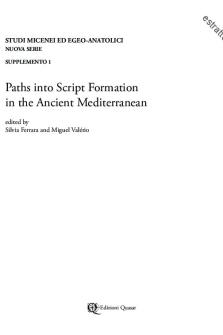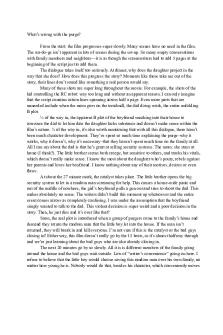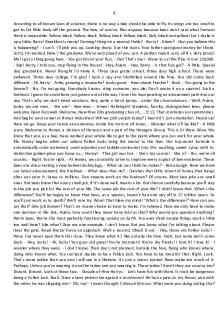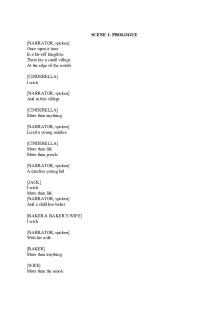The Byblos Script PDF

| Title | The Byblos Script |
|---|---|
| Author | José Ángel ZAMORA |
| Pages | 32 |
| File Size | 867.4 KB |
| File Type | |
| Total Downloads | 260 |
| Total Views | 337 |
Summary
es tra tto STUDI MICENEI ED EGEO-ANATOLICI NUOVA SERIE SUPPLEMENTO 1 Paths into Script Formation in the Ancient Mediterranean edited by Silvia Ferrara and Miguel Valério Edizioni Quasar es tra tto STUDI MICENEI ED EGEO-ANATOLICI NUOVA SERIE SUPPLEMENTO 1 è una pubblicazione del Consiglio Nazionale d...
Description
NUOVA SERIE SUPPLEMENTO 1
Paths into Script Formation in the Ancient Mediterranean edited by Silvia Ferrara and Miguel Valério
Edizioni Quasar
tto
tra es
STUDI MICENEI ED EGEO-ANATOLICI
NUOVA SERIE SUPPLEMENTO 1
è una pubblicazione del Consiglio Nazionale delle Ricerche, Roma ISBN 978-88-7140-898-9 Direttore / Editor-in-chief Anna D’Agata (CNR, Roma)
Undertaken with the assistance of Institute for Aegean Prehistory (INSTAP), Philadelphia *
Printed with the support of Gerda Henkel Stiftung, Düsseldorf * The editors are grateful to Judith Weingarten for revising the English of the original manuscript
Immagine di copertina / Cover illustration Writing Travels the Sea, drawing by Miguel Valério based on signs from the Cretan Hieroglyphic, Byblos and Anatolian Hieroglyphic scripts Stampa e distribuzione / Printing and distribution Edizioni Quasar di Severino Tognon s.r.l. Via Ajaccio 41-43 – 00198 Roma tel. +39 0685358444, fax +39 0685833591 email: [email protected] www.edizioniquasar.it © 2018 CNR - Consiglio Nazionale delle Ricerche Autorizzazione Tribunale di Roma nr. 288/2014 del 31.12.2014
tto
tra es
STUDI MICENEI ED EGEO-ANATOLICI
tto
tra es
SOMMARIO
Anna Lucia D’Agata Preface 7 Silvia Ferrara, Miguel Valério Introduction 9
Image-Bound Scripts at the Inception of Writing 1. Roeland P.-J.E. Decorte The Origins of Bronze Age Aegean Writing: Linear A, Cretan Hieroglyphic and a New Proposed Pathway of Script Formation
13
2. Mark Weeden Hieroglyphic Writing on Old Hittite Seals and Sealings? Towards a Material Basis for Further Research
51
Adaptations: Between Pictorialism and Schematism 3. Juan Pablo Vita, José Ángel Zamora The Byblos Script
75
4. Miguel Valério Cypro-Minoan: An Aegean-derived Syllabary on Cyprus (and Elsewhere)
103
5. Javier de Hoz The Southwestern Palaeo-Hispanic Script: State of Knowledge, Hypotheses and Controversies
129
6. Ignasi-Xavier Adiego Local Adaptations of the Alphabet among the Non-Greek Peoples of Anatolia
145
7. Alex de Voogt The Meroitic Writing System: Change and Variation
163
Patterns and Diversity: A World of Possibilities 8. Gordon Whittaker Aztec Hieroglyphic Writing: A Comparative Perspective
173
9. Piers Kelly The Invention, Transmission and Evolution of Writing: Insights from the New Scripts of West Africa 189
tto
tra es
CHAPTER 3
THE BYBLOS SCRIPT Juan-Pablo Vita, José-Ángel Zamora Summary The discovery of the first pseudo-hieroglyphic inscription in 1929 in the city of Byblos (modern Jbeil, Lebanon) by Maurice Dunand marks the beginning of the modern history of this type of inscriptions, the current corpus currently being made up of about fifteen texts. Written in a pictographic signary, probably a syllabary and seemingly Egyptian-inspired, almost one hundred different signs are attested. These inscriptions were all found in Byblos in unclear archaeological contexts (they are usually dated from the early stages of the second millennium BC) and are incised on various supports. The area and period of reference might suggest that the language used in these texts is Northwest Semitic, though no internal evidence supports this claim. Yet, despite numerous efforts, the script must still be considered as undeciphered. Notwithstanding all the difficulties attached to this epigraphic corpus, the pseudo-hieroglyphic script is highly significant for the history of ancient writing. It reveals that local scripts other than Egyptian hieroglyphic and Mesopotamian cuneiform systems existed in the Syro-Palestine area prior to or simultaneous with the first linear alphabet or alphabets. Syria-Palestine in the second millennium BC thus appears to be a hotbed of disparate languages and scripts which fostered the development of new systems. This chapter will review the history of research, the chronological issues, the morphology of signs and the layout of lines, the direction of the script, punctuation marks, etc. An internal analysis of the script system will also be attempted, with the due caveat that this is an undeciphered script recording an unknown language. We will examine the possible stems, declension patterns, suffixes, logograms, etc. The ultimate purpose is not to identify the underlying language, but rather to gain a greater understanding of how this script works.
INTRODUCTION In the late 1920’s and early 1930’s a small group of texts, carved on a couple of metal tablets, some fragments of stone stelae and several bronze spatulas, was discovered during Dunand’s archaeological excavations at Byblos (Fig. 1). They were written, probably in the second millennium BC, in a linear script usually called pseudo-hieroglyphic of Byblos due to the resemblance of its signs, noticeably pictographic, to Egyptian hieroglyphs. Nevertheless, the designation ‘pseudo-hieroglyphic of Byblos’ poses some issues. While the geographical reference is quite appropriate to refer to the script known chiefly in pre-classical Byblos (though it is not certain that the script actually originated in the city), the adjective ‘pseudo-hieroglyphic’ seems inferential (as it a priori links its name to the Egyptian script)1 and unclear (it may apply to any, even non epigraphic, hieroglyph-like element).2 Other possibly more accurate options, such as ‘Byblos syllabary’ (or the bolder variant ‘Canaanite syllabary’), also presupposes conclusions on its functioning and/or historical use. The least problematic designation given to this script consequently alludes exclusively to the place the documents were mainly found: ‘the Byblos script’. While not entirely trouble-free3 when other terms could perhaps be more
1 As we shall see, the resemblance of the signs to Egyptian hieroglyphs actually originated the term. As a reference to a similar graphical system, the term is equally inappropriate. 2 In archaeological literature the term “pseudo-hieroglyphic inscriptions” is used on some occasions to refer to those using Egyptian signs, either imitating them or for purely decorative reasons, without conveying a coherent text. 3 The script dealt with here is not the only script attested in Byblos. In fact, the Greek name of the city is used to identify other scripts and groups of documents such as the Phoenician inscriptions from the first millennium BC found at the site (as both the language and the script used in these inscriptions constitute clearly differentiated variants within the Phoenician corpus). As a matter of fact, in that context, “the Byblos script” would refer to the palaeographic variant of the Phoenician linear alphabet used in the city. SMEA NS SUPPL. 1, 2018, 75-102
tto
tra es
76 Juan-Pablo Vita, José-Ángel Zamora
Byblos/Jbeil
Fig. 1. Map of Lebanon showing the location of modern Jbeil, ancient Byblos (on Google Maps) and aerial photograph of the city’s archaeological area (after Francis-Allouche, Grimal 2012, fig. 1).
appropriate,4 ‘the Byblos script’ will be the term used herein (we will refer to the sources as ‘documents in the Byblos script’). This paper will produce a detailed account of the corpus in the Byblos script and of its features, its geographical and chronological framework, and the various theories regarding its formation. Finally, brief conclusions and final considerations will be presented. CORPUS OF TEXTS Dunand’s inscriptions The modern history of inscriptions goes back to 1929 when French archaeologist Maurice Dunand found the first instance of this script during his eighth archaeological campaign at the ancient city of Byblos (modern Lebanon). One year later Dunand published the find, a fragment of a stela engraved with an, until then, unknown script (Dunand 1930). Later campaigns unveiled further inscriptions in the Byblos script. In 1945 Dunand published in one volume, Byblia Grammata, all the inscriptions found during his excavations at Byblos with the purpose of reaching an improved knowledge of the origin and development of the alphabet. He gathered different types of inscriptions from different periods, including ten inscriptions in the Byblos script. Following the order in which they were found, he identified them with letters a to j. They consisted of four stelae (a, g, h, j), four spatulas (b, e, f, i) and two bronze tablets (c, d).
4 Sznycer (1975, 82) suggested using the term “Gublite” to refer to this script, derived from the local name of the city, Gubla or Gebel. The label “Gublian script” would indeed reduce misunderstandings since, in this way, ‘Byblos’ or Byblian’ would thus be used to refer only to inscriptions from the first millennium BC (in accordance with the later Greek version of the name for the city beyond a mere conventionalism). His proposal, however, has had little influence.
tra es
The Byblos Script 77
tto
A few years later Dunand published four further inscribed fragments of stelae, which he named from k to n (Dunand 1978). In total, he located and published the fourteen texts in Byblos script presented herein.
Tablets — Tablet c (Fig. 2) Editio princeps: Dunand 1945, 74-76. Material: Bronze. Number of lines: 15 (A: 13 + B: 2). Total number of signs (visible or partially visible): 225. Number of diverse signs: 46 + 3. Direction of text: From right to left. This is demonstrated by the fact that lines start right next to the right edge of the piece and mostly finish before reaching the end of the left edge (including several consecutive lines, thus ruling out the possibility of a boustrophedon text). Unlike the Mesopotamian practice, in order to read the reverse the tablet needs to be turned on a theoretical vertical axis without inverting the obverse (as we would nowadays turn the pages of a book). Dividers: No division lines between lines. No dots, lines or division spaces between letters. Material segmentation indicators: Lines that have blank beginnings or ends.
Fig. 2. Photograph and drawing of Tablet c (Dunand 1945, pl. IX, fig. 28).
tto
tra es
78 Juan-Pablo Vita, José-Ángel Zamora
— Tablet d (Fig. 3) Editio princeps: Dunand 1945, 76-78. Material: Bronze. Number of lines: 41 (A: 22 + B: 19). Total number of signs (visible or partially visible): Approx. 457 + 3 numerals. Number of diverse signs: 65 + 3. Direction of text: From right to left. In this case, the reverse was read by turning the tablet on a theoretical horizontal axis, turning the back upside down (that is, identical to Mesopotamian custom). Dividers: No division lines between lines. No dots, lines or division spaces between letters. Material segmentation indicators: Non-existent.
Fig. 3. Photograph and drawing of Tablet d (Dunand 1945, pl. X, fig. 29).
tra es
The Byblos Script 79
tto
Stelae — Stela a (Fig. 4) Editio princeps: Dunand 1930; 1945, 71-73. Material: Limestone. Number of lines: 10. Total number of signs (visible or partially visible): 123. Number of diverse signs: 34 + 3. Direction of text: From right to left. Dividers: Text lines divided by horizontal lines. Material segmentation indicators: Non-existent.
Fig. 4. Photograph and drawing of Stela a (after Dunand 1945, pl. VIII, fig. 26).
— Stela g (Fig. 5) Editio princeps: Dunand 1945, 80-81. Material: White limestone. Number of columns: 6 (5 of them are textual in all certainty; the column on the right end is hardly visible). Total number of signs (visible or partially visible): 40. Number of diverse signs: 18 + 3. Direction of text: Judging by the bird-shaped sign in the first column (provided each sign is oriented as in other inscriptions), the text should be read from right to left. The arrangement of signs into columns is reminiscent of Egyptian practice, unlike the succession of signs following sequentially. Dividers: Double division lines between columns, though apparently no dividers are used between signs. Material segmentation indicators: Non-existent.
Fig. 5. Photograph and drawing of Stela g (after Dunand 1945, pl. 11.g, fig. 32).
— Stela h (Fig. 6) Editio princeps: Dunand 1945, 82. Material: Stone, unspecified. Number of lines: 4 (three of them certainly textual). Total number of signs (visible or partially visible): 7. Number of diverse signs: 4 + 3. Direction of text: From right to left (judging by the anepigraphic spaces on the left margin of lines). Dividers: No dividers between signs. Text lines separated by horizontal lines. Material segmentation indicators: Non-existent.
tto
tra es
80 Juan-Pablo Vita, José-Ángel Zamora
Fig. 6. Photograph and drawing of Stela h (after Dunand 1945, pl. XI.h, fig. 33).
— Stela j (Fig. 7) Editio princeps: Dunand 1945, 83-76. According to Dunand 1945, 83, it is highly likely that fragments h and j may correspond to the same inscription. Material: Limestone. Number of lines: 4 preserved, though one of them, the first on the upper part, is scarcely visible. Total number of signs (visible or partially visible): Approx. 16. Number of diverse signs: 10 + 3. Direction of text: Presumably from right to left, as some lines do not cover all the space available on the left margin. Dividers: Text lines separated by horizontal lines. Material segmentation indicators: Dividers between letters; end of lines 2 and 4.
Fig. 7. Photograph and drawing of Stela f (after Dunand 1945, pl. XI.f, fig. 35).
— Stela k (Fig. 8) Editio princeps: Dunand 1978, 51-53. Material: Limestone. Number of lines: 5. Total number of signs (visible or partially visible): 30. Number of diverse signs: 18 + 1.
tra es
The Byblos Script 81
tto
Direction of text: Apparently from right to left (some lines do not cover all the space on the left). Dividers: Possible divider between signs 4 and 5 of the fourth line. Unclear stroke between signs 1 and 2 of the fifth line. Material segmentation indicators: The divider (provided it exists, as seems to be the case).
Fig. 8. Photograph and drawing of Stela k (after Dunand 1978, pl. V, fig. 1).
— Stela l (Fig. 9) Editio princeps: Dunand 1978, 53-56. See also Hoch 1995. Material: Limestone. Number of lines: 13. Total number of signs (visible or partially visible): Approx. 74. Number of diverse signs: Approx. 51. Direction of text: Probably from right to left, but cf. l. 12. Dividers: Possible dividers between signs. Material segmentation indicators: Unclear.
Fig. 9. Photograph and drawing of Stela l (after Dunand 1978, pl. VI, fig. 2).
— Stela m (Fig. 10) Editio princeps: Dunand 1978, 58. Material: Limestone. Number of lines: 3. Total number of signs (visible or partially visible): 14. Number of diverse signs: 8. Direction of text: From left to right (if, for instance, the orientation of sign that of other preserved inscriptions).
on the second line is analogous to
Dividers: Possible dividers between signs 2 and 3 on the first line and signs 3 and 4 on the second line. Material segmentation indicators: Dividers.
tto
tra es
82 Juan-Pablo Vita, José-Ángel Zamora
Fig. 10. Drawing of Stela m (after Dunand 1978, fig. 3).
— Stela n (Fig. 11) Editio princeps: Dunand 1978, 58-59. Material: Stone, unspecified. Number of lines: 5. No noticeable signs on the first line, the most poorly preserved. No indication of a sixth line can be noticed under the fifth preserved line. Total number of signs (visible or partially visible): Approx. 19. Number of diverse signs: 18. Direction of text: Probably from right to left (cf. for example sign on line 5). Dividers: Possible divider after the second visible sign on the third line. Material segmentation indicators: Unclear.
Fig. 11. Photograph and drawing of Stela n (after Dunand 1978, pl. VI, fig. 4).
Spatulas — Spatula b (Fig. 12) Editio princeps: Dunand 1945, 73-74. Material: Bronze.
tra es
The Byblos Script 83
tto
Number of lines: 7 (A: 4 + B: 3). Total number of signs (visible or partially visible): 43 (39 + 4 dividers). Number of diverse signs: 23 + 4 (dividers). Direction of text: From right to left, as revealed, for instance, by the first sign on line 3, repeated on several occasions. Dividers: No division lines between lines. Four dividers of sign sequences (on lines 1, 2, 3 and 6). Material segmentation indicators: Beginning and end of text. Dividers on lines 1, 2, 3 and 6.
Fig. 12. Photograph and drawing of Spatula b (after Dunand 1945, pl. XIII.1, fig. 27).
— Spatula e (Fig. 13) Editio princeps: Dunand 1945, 78-79. Material: Bronze. Number of lines: 3 (A: 3 + B: 0). Total number of signs (visible or partially visible): 17 (12 + 5 numbers). Number of diverse signs: 11 + 1. Direction of text: From right to left. Lines are laid out aligned from the right and end irregularly on the left. The last two lines do not cover all the available space on the left margin. Dividers: No division lines between lines. No division lines between signs. Material segmentation indicators: Beginning and end of text. End of line 2 and beginning of 3.
Fig. 13. Photograph and drawing of Spatula e (after Dunand 1945, pl. XII.e, fig. 30).
— Spatula f (Fig. 14) Editio princeps: Dunand 1945, 79-80. Material: Bronze. Number of lines: 7 (A: 3 + B: 4). Total number of signs (visible or partially visible): Approx. 50 (47 + 3 numbers). Number of diverse signs: Approx. 28. Direction of text: From right to left on side A, and from left to right on side B (where the orientation of some signs, not all, is flipped horizontally), judging by the arrangement of the signs on the spatula. Dividers: No division lines between lines. No clear division lines between letters. Material segmentation indicators: Beginning and end of text; perhaps also the end of some lines.
tto
tra es
84 Juan-Pablo Vita, José-Ángel Zamora
Fig. 14. Photograph and drawing of Spatula f (after Dunand 1945, pl. XII.f, fig. 31).
— Spatula i (Fig. 15) Editio princeps: Dunand 1945, 82. Material: Bronze. Number of lines: 9 (A: 4 + B: 5). Total number of signs (visible or partially visible): Approx. 96. Number of diverse signs: Approx. 36. Direction of text: Apparently, from right to left. Lines start quite well aligned from the right and end irregularly on the left. The last line does not cover all the space available on the left margin. Dividers: No division lines between lines. Small vertical division lines between letters. Material segmentation indicators: Dividers (in addition to the beginning and the end of the text).
Fig. 15. Photograph and drawing of Spatula i (after Dunand 1945, pl. XII.i, fig. 34).
Summing up, it could be claimed that while sign appearance and line arrangement may vary depending on the surface (on bronze, strokes are simple and lines are horizontal; on stone, however, signs present double strokes, and lines can also be arranged vertically), these sources reveal a remarkably homogenous script from a graphic viewpoint. Its use seems also quite regular: while some spatulas present a different direction of text on each side, most documents are written from right to left. Another significant feature is the use of word or word-group dividers in some inscriptions (as in the Ugaritic alphabet or in the archaic Phoenician alphabet, and must therefore have applied also to the linear alphabet of the second millennium BC, at least in some of its versions). Moreover, while the
tra es
The Byblos...
Similar Free PDFs

The Byblos Script
- 32 Pages

The-Legend-Script - script
- 5 Pages

The purge - script coverage
- 3 Pages

THE Lighthouse script
- 100 Pages

The Bee Movie Script
- 11 Pages

The Entire Shrek 1 Script
- 93 Pages

Script the opposite of amnesia
- 7 Pages

script
- 101 Pages

Script
- 2 Pages

The entire bee movie script
- 164 Pages

THE Royal Adelaide SHOW script
- 4 Pages

Script
- 7 Pages
Popular Institutions
- Tinajero National High School - Annex
- Politeknik Caltex Riau
- Yokohama City University
- SGT University
- University of Al-Qadisiyah
- Divine Word College of Vigan
- Techniek College Rotterdam
- Universidade de Santiago
- Universiti Teknologi MARA Cawangan Johor Kampus Pasir Gudang
- Poltekkes Kemenkes Yogyakarta
- Baguio City National High School
- Colegio san marcos
- preparatoria uno
- Centro de Bachillerato Tecnológico Industrial y de Servicios No. 107
- Dalian Maritime University
- Quang Trung Secondary School
- Colegio Tecnológico en Informática
- Corporación Regional de Educación Superior
- Grupo CEDVA
- Dar Al Uloom University
- Centro de Estudios Preuniversitarios de la Universidad Nacional de Ingeniería
- 上智大学
- Aakash International School, Nuna Majara
- San Felipe Neri Catholic School
- Kang Chiao International School - New Taipei City
- Misamis Occidental National High School
- Institución Educativa Escuela Normal Juan Ladrilleros
- Kolehiyo ng Pantukan
- Batanes State College
- Instituto Continental
- Sekolah Menengah Kejuruan Kesehatan Kaltara (Tarakan)
- Colegio de La Inmaculada Concepcion - Cebu



